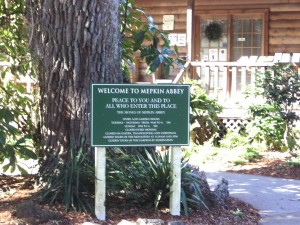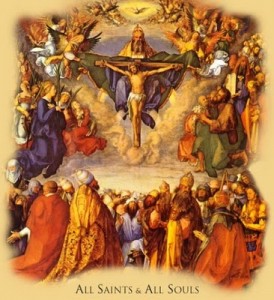I love the monastic life. Ever since I stayed with the Buddhist monks at their monastery in Bolivia, North Carolina, I’ve contemplated their lifestyle, their values, practices, psychology, and devotion. In another life, I may have been or will become one, but in this life, it’s one of my most passionate interests.
It’s rare that I meet someone with my level of energy and geek-like love for religion/theology/philosophy…it’s even rarer that I come across another soul who loves the monastics the way I do. In fact, it’s never happen before.
Until now.
“Hey Andrew,” my Mentor said over the phone. “Want to go hang out at a monastery?! I’ve always wanted to go, I knew you liked monks, I think we should go. Let’s go!”
This was at about 11:00 p.m. Monday evening.
I laughed and said “Heck yeah, man!”
The idea had manifested ex nihilo that evening. We left for the monastery the next morning.
Welcome to Mepkin Abbey, a Trappist community of Roman Catholic monks in Monck’s Corner, South Carolina.
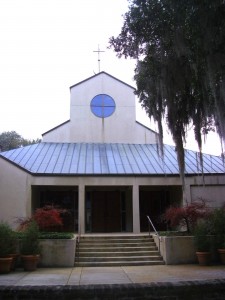
There are many orders of monks in Catholic Church. None of these represent a splinter group or breakaway from the Church, but only a unique way of service to God and mankind, or avenue of prayer life. For example Franciscan monks are more involved with serving the poor and/or sick while Dominican monks are typically more involved with teaching/preaching the faith. The Trappist monks of Mepkin Abbey are more contemplative and prayerful. Monks wake around 3:30 a.m. every day and spend most of their time in silence, meditating on or praying to God, working/caring for the land, and attending Mass. Monks grow their own food and thrive on their own labor and the donations of others.
Jason, my Mentor, once told me that what he loved about Catholic Churches is that someone could walk inside and learn about Jesus without anyone saying a word. Visit your local church and just study the artwork inside and along the walls. In my church, one can seeing the life and mission of Christ illustrated on the very walls. The liturgies themselves–especially the Eucharist (we’ll cover that later)–convey the gospel in a very interactive way.
I was reminded of this while at Mepkin Abbey, but to a whole new level. Walking along the gorgeous botanical gardens and fields, meditating while looking out on the Cooper River, listening to the birds and the wind…I had the same encounter. The grounds itself, was the Church speaking, teaching the mysteries of Christ.
The heavens declare the glory of God;
the skies proclaim the work of his hands.
2 Day after day they pour forth speech;
night after night they reveal knowledge.
3 They have no speech, they use no words;
no sound is heard from them.
4 Yet their voicegoes out into all the earth,
their words to the ends of the world.
In the heavens God has pitched a tent for the sun.
5 It is like a bridegroom coming out of his chamber,
like a champion rejoicing to run his course.
6 It rises at one end of the heavens
and makes its circuit to the other;
nothing is deprived of its warmth.
–Psalms 19: 1-6
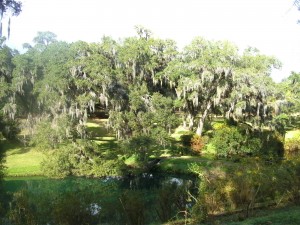
It began in “The Labyrinth”, a field of tall grass with winding paths. Each path led to a circle with small, wooden seats for reading or meditation. Jason and I walked the paths and eventually settled down for about 20 minutes of silent reflection. I prayed the rosary and for the first time, really contemplated the life of Christ and what each stage meant.
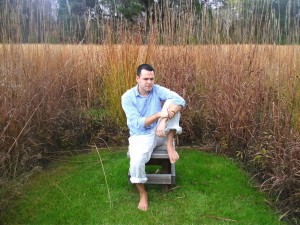
The rosary helps you see Christ clearly by meditating on his life. It isn’t an exclusive Catholic tool, anyone can use this as a contemplative device.
Artwork around the property continued to inspire us. These sculptures, created out of entire tree trunks, completely blew us away.
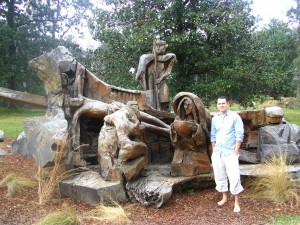
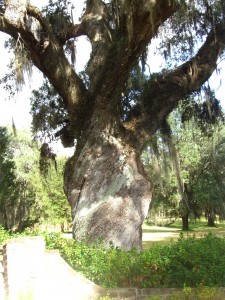
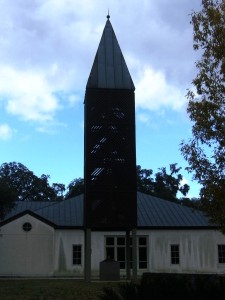
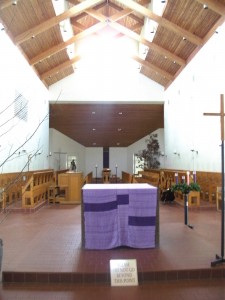
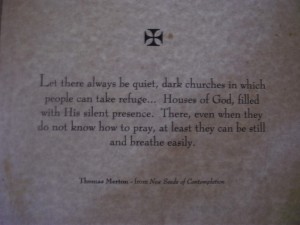
Of all the beauty, of all the deep conversation between Jason and me, nothing was perhaps more profound for me than this statue of Mary and the baby Jesus.
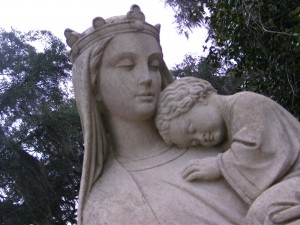
This was my moment of Catholic satori. When I approached this giant statue and just meditated upon, spent time with the articulated meaning gushing forth from this sculpture, Mary and her relationship to both Jesus and the Church makes perfect sense. I no longer questioned the Catholic reasons for treating her so well–so highly. I felt sorry for all those years of criticizing the Church over their adoration of this woman and her station with Christ. Had I but taken the time to study this as a short-sighted, judgmental, closed-minded so-called Christian in high school, my entire future might have changed forever. I’ll go over more of these thoughts on Mary and her position in the Church later.
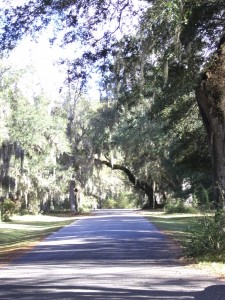
In a real way, Mepkin Abbey gave us a slice of Eden, of what our existence was meant to be like. The monks work with the land and act as its custodians in a beautiful way which illustrates a symbiosis, not an act of dominance. Taking only what they need and giving any surplus to those around them, tenderly caring for the land and ushering in its inherent beauty, using the grounds as an amplification of God’s glory…this is real. So often we think of monks as living outside of reality–of how society is supposed to be. I beg to differ that the correct view is the other way around. Monastics from all faiths seem to live exactly as we are meant to: with nature, not against it.
We spent all day at Mepkin Abbey, but it wasn’t nearly enough. The drive itself was about 2 1/2 hours one way, but the intense conversation on the way there and back, the revelations and rejuvenation we received while there was well worth the fatigue. I saw things, realized things about myself and about the Church that books and lectures could have never shown me. I am literally changed forever. This proves once again that experience is all too often the best teacher.
After leaving, Jason and I swore that we’d make Mepkin Abbey a place of personal pilgrimage. The abbey offers retreat times for only a few days or up to a month. Heather saw the twinkle in my eye when I mentioned the month-long retreat and said no, she’s burnt out on my 30-day experiences.
I hope you’ll find a place of retreat for yourself, somewhere that pushes the boundaries of your expectations. This is where the most intense and deeply affecting learning occurs.
